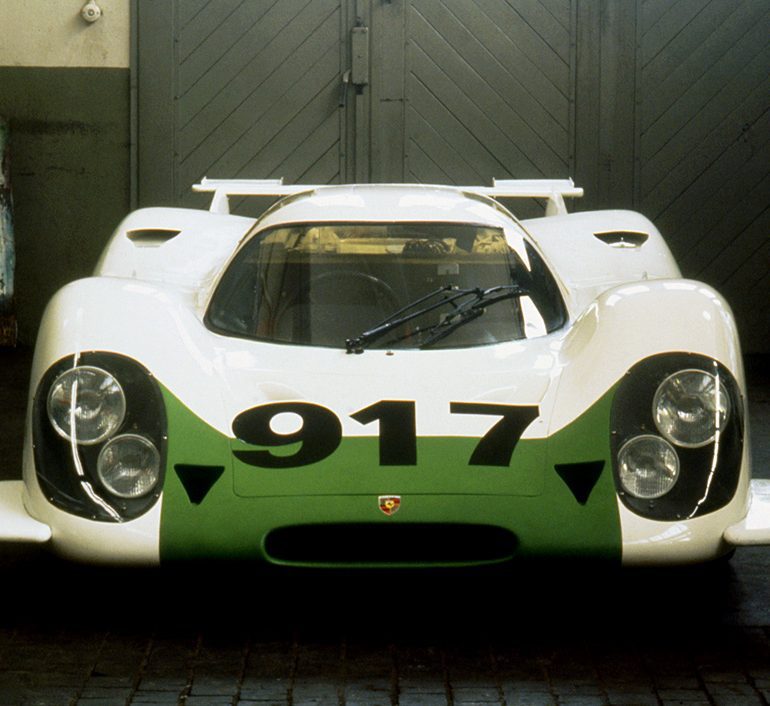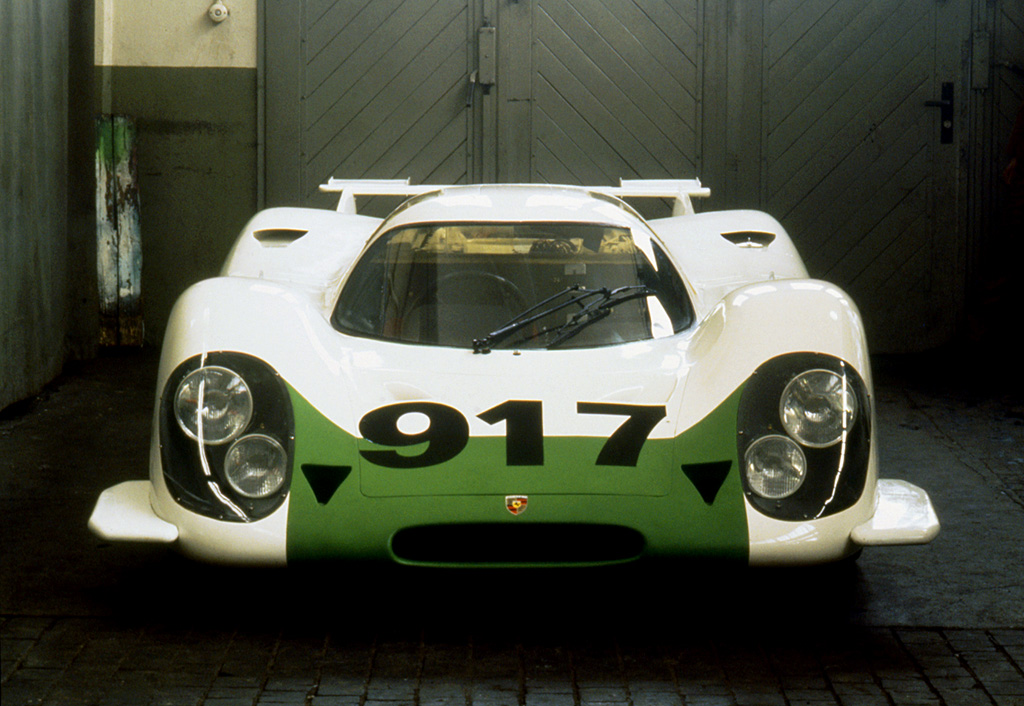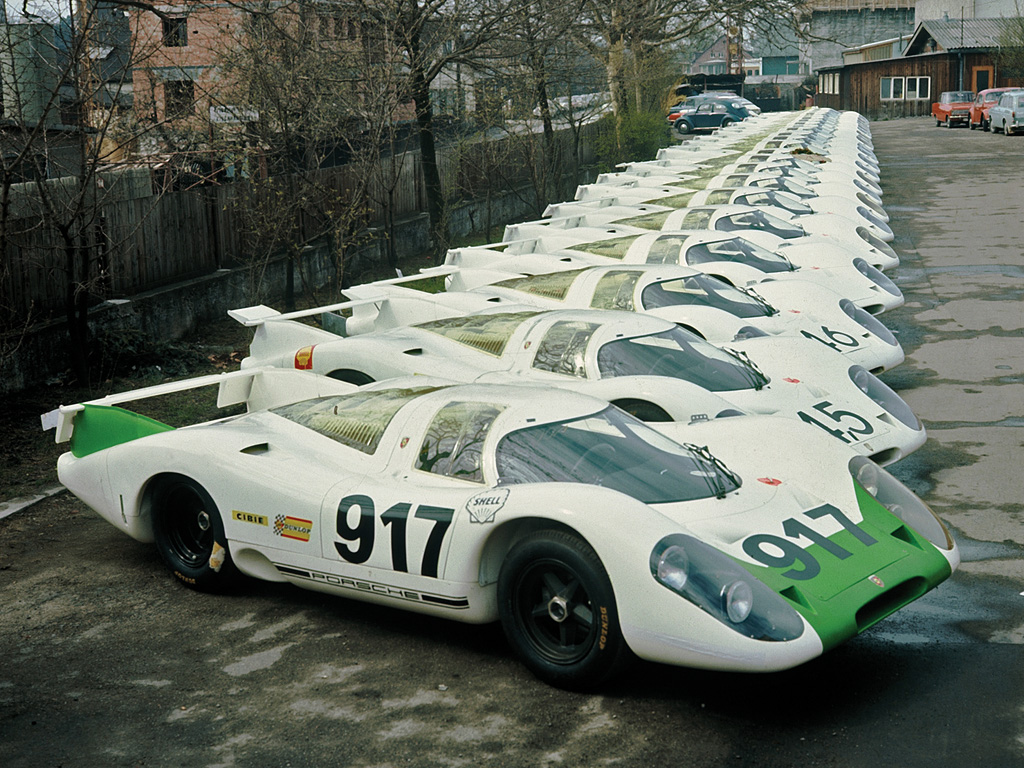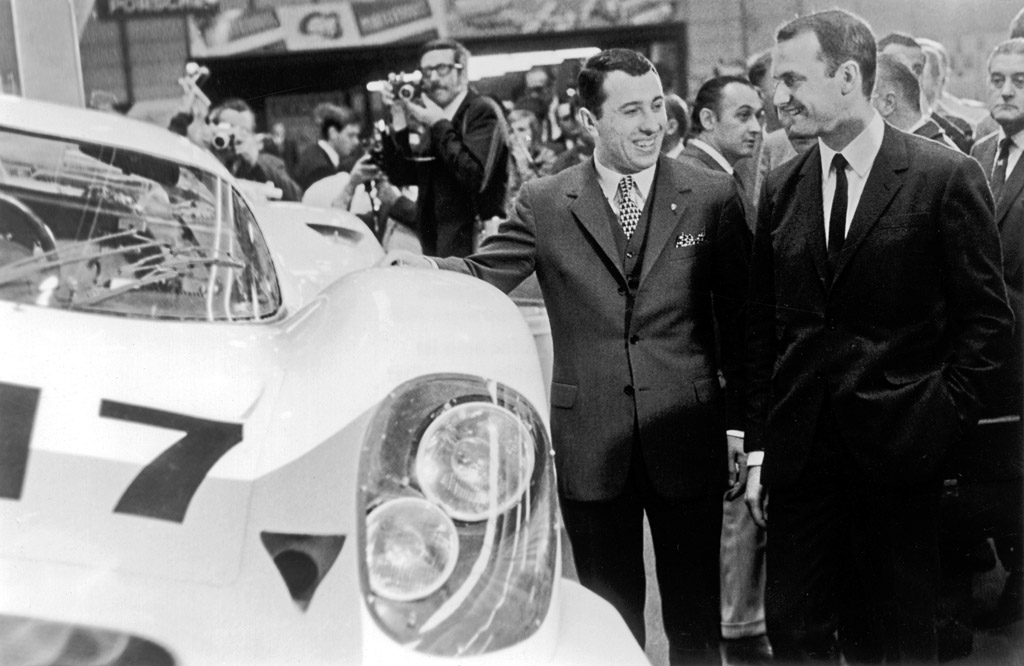1969 Porsche 917
Few race cars have attained the same notoriety as the 917. It was dangerously quick and also reliable enough to win Porsche’s first overall victory at Le Mans in 1970. The feat was repeated in 1971 and the 917 has now become an icon of Porsche performance. Even more so after being extensively featured in Steve McQueen’s film, Le Mans.
It’s true that Porsche took their most daring step forward with the 917, but it followed a long and progressive development of sports racing prototypes. Leading up to the 917, Porsche and Ferdinand Piëch had made very successful sports race cars limited to the smaller classes. These included the 904 Carrera GT, 906, 908, but they were often slower than the GT40 and Ferrari Prototypes which would take overall victory.
In April 1968, the CSI reduced the minimum required production for sports car homologation from 50 to 25 cars. This caught the attention of Piëch who considered a new sports prototype that could win Le Mans. The 908 fit well within the new 3.0 liter prototype class, but it was the 5-liter sports car class known as Group 4 which caught their attention. In it were the V8-powered Lola T70 and Ford GT40 MKI which were very capable of outright victories. Porsche decided the only way to win the World Sports Car Championship was to build 25 copies of a 5-liter prototype that would meet the minimum homologation requirements to qualify as a sports car.
After the decision was finalized by Piëch in July 1968, Porsche engineers had 10 months to create an all-new engine and produce 25 complete cars for both the factory and privateers. This risky and expensive investment eventually paid off and positioned Porsche at the top of motor sport.
Engineering
Using the 908’s design as a framework, Porsche engineers took the bold task of making the most powerful and lightweight race car possible. They used a chassis structure similar to the 908’s, but used aluminum instead of steel. The spaceframe chassis weighed only 93 lbs (42 kg). To have enough room for the large engine and driver in the small chassis, the foot well and pedals extended past the front wheels.
An air-cooled engine, called the type 917.910, was similar to the 908’s, but had an entirely new bottom end. Instead of a boxer arrangement, the 917 used a 180º Flat-12 crankshaft which allowed opposite connecting rods to share crankshaft bearings. This made the engine more compact which was a primary concern. Timing gears were centered in the middle of the block which essentially split the engine in two. Cooling was provided by an electrically powered fan that sat in between the intake trumpets and was exposed through the bodywork.
Displacing under 4.5 liters, power was initially rated around 580 bhp. Each unit took over 160 hours to complete and was made of exotic alloys, magnesium and titanium. Access to the engine was provided by a completely removable rear body section which could be changed to high-downforce or low-drag configurations. For the brief 1969 season, a long swooping tail was used with a full adjustable rear winglets.
Racing 1969
Porsche first revealed the 917 to the press at the 1969 Geneva Motorshow. This was followed by an intense CSI homologation inspection, demanding that all the cars needed to be completed before the car could race. Remarkably, Porsche produced eight more cars in three weeks to complete the necessary 25 cars. On April 1st, 1969 the 917 was homologated just in time for Le Mans.
During initial tests, the 917 was found to be particularly unstable and many drivers began to have doubts about its design. Brain Redman said “it was incredibly unstable, using all the road at speed.” It was thought that the engine might be too powerful for the chassis and the much less powerful 908 was preferred by the factory drivers. At the 1000km of Spa, a long tail 908 was chosen in favor over the 917.
Before the 917 hit Le Mans, it debuted at the 1969 Nürburgring 1000km and in the hands of David Piper and Frank Gardner. No factory drivers would chose the 917 and instead piloted 908 Spyders to a 1-2-3-4-5 victory. The 917 trailed in eighth place.
Leading up to Le Mans, many drivers were cautious about the 917, but persisted on with hopes of overall victory. 917s set the fastest lap in practice and looked to have all the right ingredients to win. Three cars were entered in the race, two factory entries and one loaned to John Woolfe Racing. Unfortunately, John Woolfe suffered a fatal crash on the very first lap which was later attributed to his lack of seat belt and experience. During the crash, the car was ripped in half, sending its flaming and ruptured fuel tank onto a Ferrari 312P that was trailing behind. The remaining 917 team cars led for around 300 laps before both dropped out with clutch bell housing problems. Eventually, the Porsche 908 Coupe of Hans Herrmann and Gerard Larrousse placed just seconds behind the winning Ford GT40.
917 K, 917 Langheck
For 1970, Porsche teams prepared two new variants that would help stabilize enough to achieve overall victory at Le Mans. These included the Kurzheck (short-tail model) and Langheck (long-tail) version.
In Detail
| type | Racing Car |
| built at | Germany |
| engine designer | Hans Mezger |







